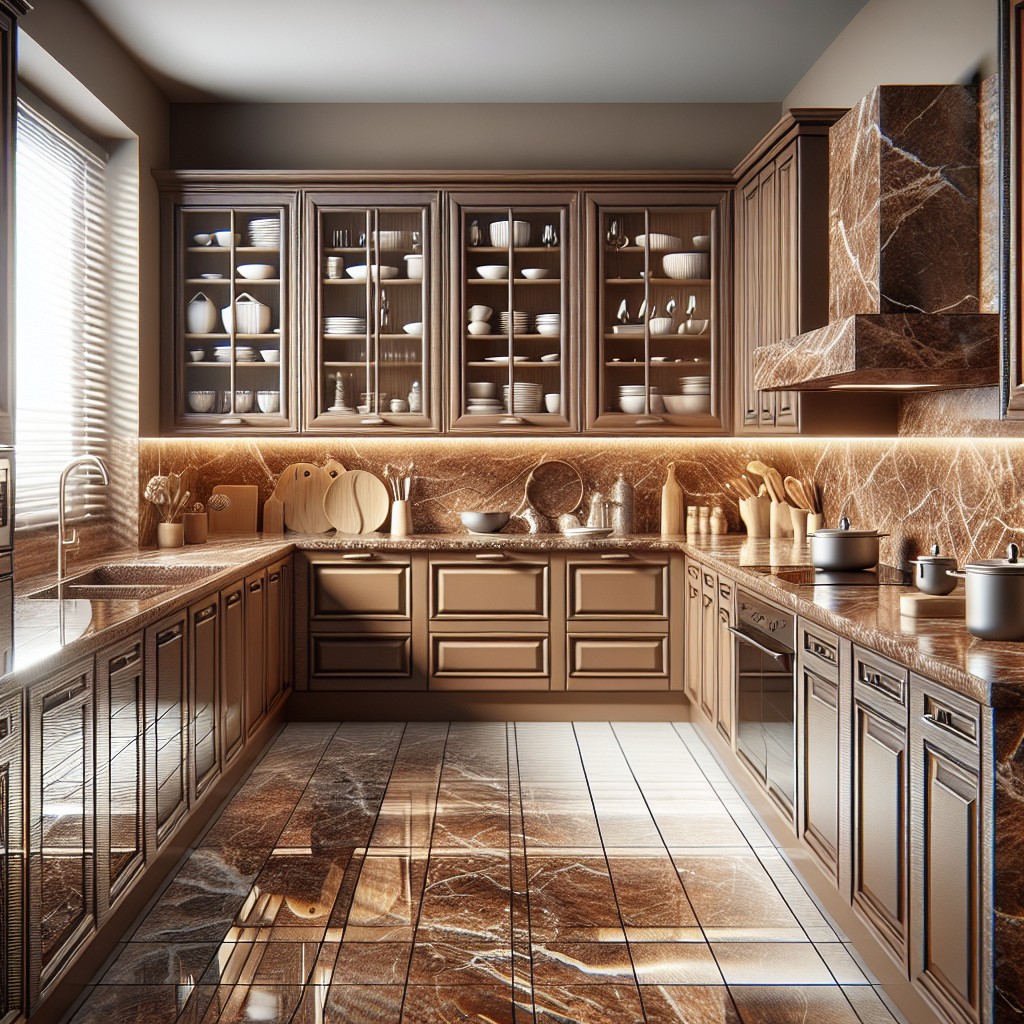Last updated on
Explore creative island loop vent ideas because their unique designs and proper installation not only enhance kitchen aesthetics but also ensure optimal functionality.
Island loop vents, also known as island fixture vents or AAVs, are crucial for the proper functioning of the plumbing systems in kitchen islands. They prevent sewer gases from entering the home and ensure smooth drainage.
However, they can be a bit of an eyesore. In this article, you will discover innovative island loop vent ideas that merge functionality with aesthetics. From cleverly hiding them in plain sight to incorporating them into the overall kitchen design, these ideas will transform your kitchen island.
Read on to explore all the details.
What's Inside
Compact Island Loop Vent Design
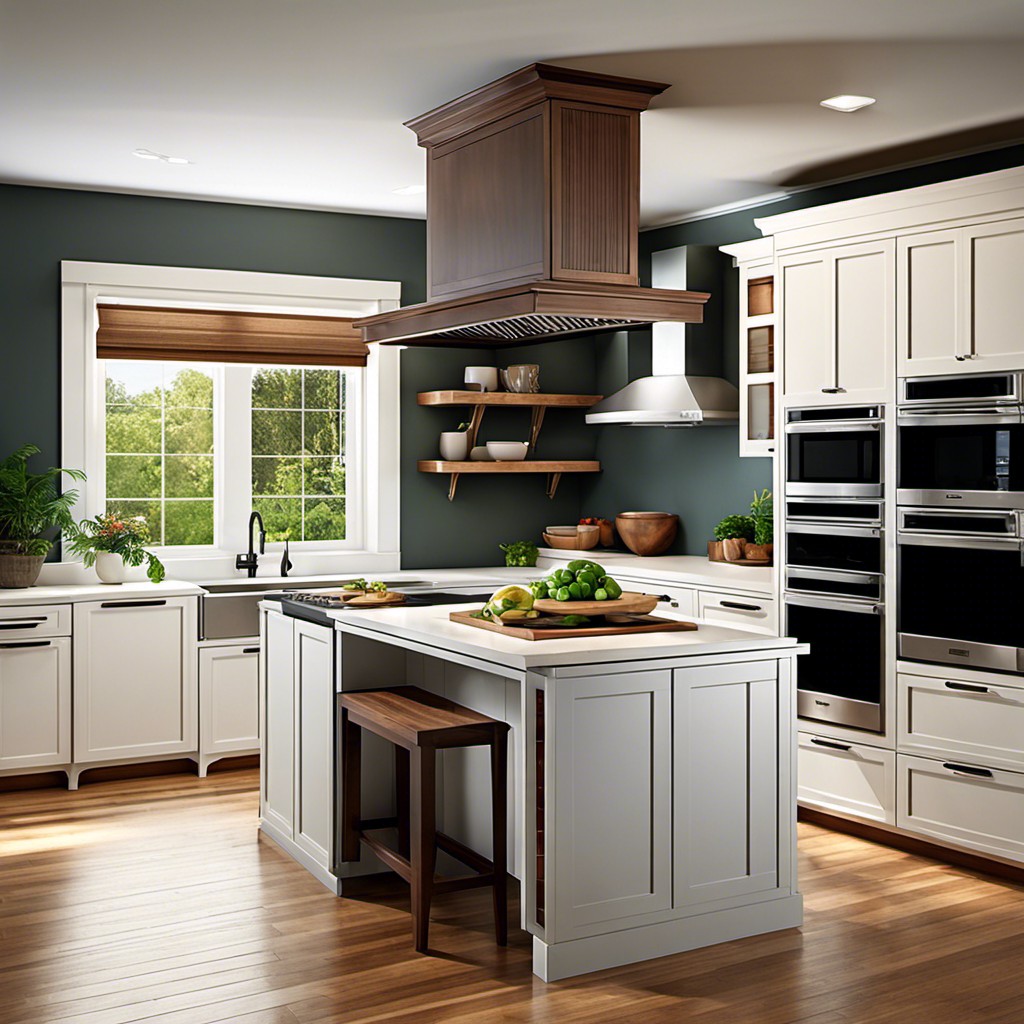
A compact design is a great solution for those with smaller kitchen islands or those wanting to maximize their workspace. This design focuses on efficient use of space and integration within the island’s structure. Importantly, it shouldn’t compromise the vent’s functionality.
Here are some key points to grasp:
- Space Efficiency: A compact loop vent is often integrated into the island’s internals, requiring minimal footprint, thus saving valuable counter space.
- Seamless Aesthetics: This design strives for a clean look, often blending with the island’s design seamlessly. The venting system itself is usually inconspicuous.
- Performance: Despite being compact in design, there should not be any compromise on the functionality. Look for designs that offer efficient and effective venting.
- Installation: It’s critical to ensure professional installation and adherence to local codes for a safe, functional setup.
Remember, the goal here is efficiency and utility in a small package, fitting into your kitchen island’s existing structure without being visually obtrusive.
Incorporating Vents Into Island Lighting Fixtures
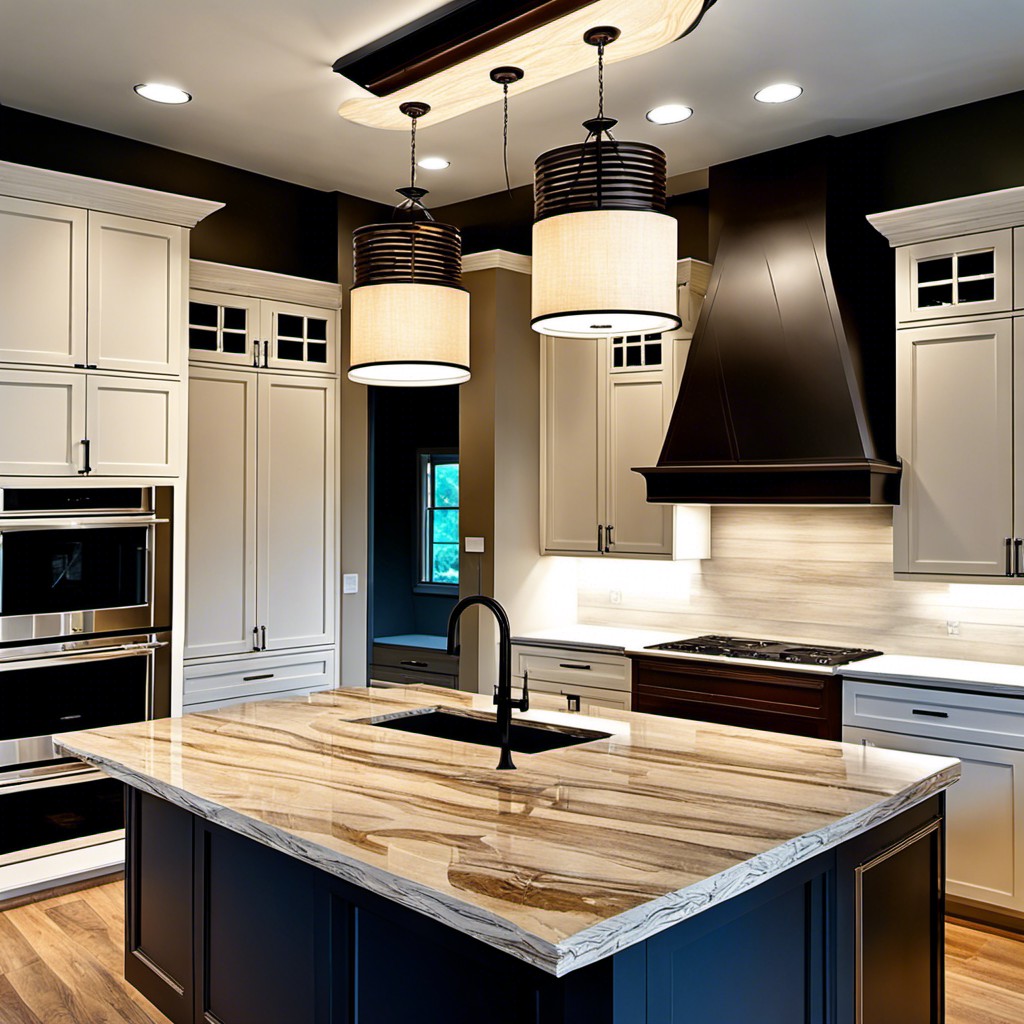
Adopting this ingenious solution to kitchen island venting presents a world of possibilities. Here are a few noteworthy aspects that make this venting solution a unique and practical choice:
1. Dual function: Lighting fixtures can also serve as vents. This clever integration of functionality saves space and contributes to a cleaner kitchen layout.
2. Aesthetics: The necessary utility of a vent is coupled with the beauty of the lighting fixture. This can greatly enhance your island’s visual appeal without the need for an obtrusive standalone vent.
3. Variety of designs: Vents can be incorporated into a multitude of lighting fixtures, ranging from pendant lights to modern recessed LEDs, allowing for seamless integration into any kitchen style.
4. Consideration for vent size: The size of the vent should ideally be proportional to the size of the island. Bigger islands will require larger vents or multiple smaller ones.
5. Smooth transition: Ensuring the fixture matches your overall kitchen decor is vital. Whether your kitchen exudes a rustic charm, a sleek modern vibe, or a classic appeal, there exists a wide variety of fixtures to accommodate all designs.
6. Professional installation: Installing a dual-purpose fixture might appear complex. To ensure functionality and safety, make sure to hire a professional technician.
Kitchen Island Loop Vent With Hidden Design

Seamlessly integrating the vent into the island design is gaining popularity. A hidden vent loop offers an uncluttered aesthetic without compromising the island’s functionality. This can be achieved by disguising the vent to match the island’s material, making it nearly invisible to the naked eye.
A few points to consider:
- Material matching: Ensure the vent covering matches, or complements, the island’s materials so it blends in perfectly.
- Professional installation: To effectively hide the vent, you may need to hire professionals. Correct installation is crucial to avoid performance issues.
- Maintaining functionality: The hidden design shouldn’t inhibit the venting capability. Ensure the design allows adequate ventilation, especially for heavy-duty cooking.
- Access for cleaning: The vent, being a key part for hygiene and cleanliness, should be easily accessible for regular cleaning and maintenance.
This versatile solution appeals to homeowners seeking a sleek, modern, and minimalist kitchen design. You can enjoy the best of both worlds: practicality and style.
Two-in-one Island Countertop and Vent Loop
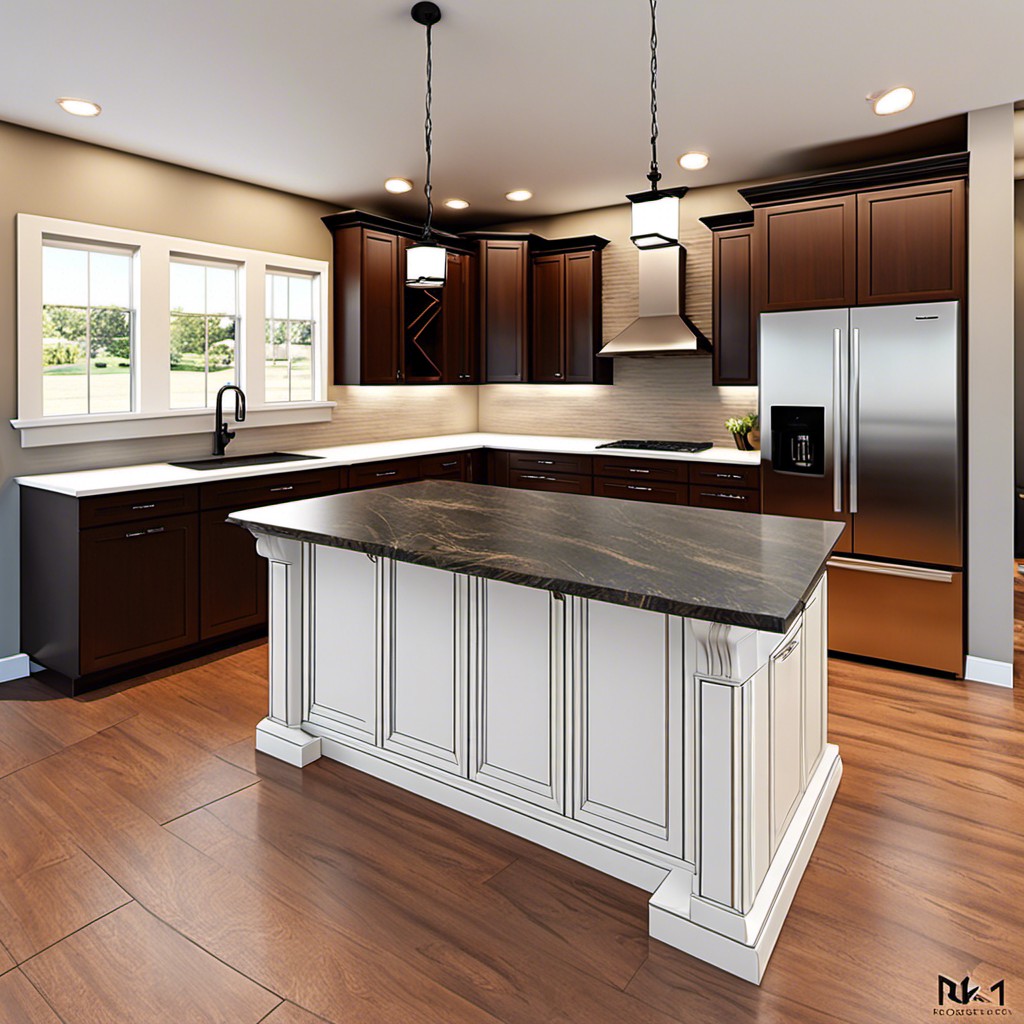
To maximize functionality without compromising aesthetic appeal, consider integrating the vent loop directly into the countertop. This fusion helps maintain kitchen uniformity, whilst ensuring adequate ventilation.
Here are a few key points:
- Seamless Integration: The vent loop is designed to align flawlessly with the countertop, creating a smooth, streamlined look.
- Material Use: There’s a wide range of materials available, like marble, quartz, or granite, offering great scope for personalization.
- Placement Choices: Even though often placed in the center, the vent loop can be adjusted to suit individual kitchen layouts and use.
- Ventilation Efficiency: Such design promotes efficient airflow and vapor displacement, making cooking more comfortable.
- Easy Maintenance: With a built-in vent, cleaning becomes more manageable, as it eliminates the need to disassemble separate parts.
Remember, this design requires professional installation to ensure functionality and safety, so it’s wise to seek expert advice.
Traditional Island Loop Vent Display
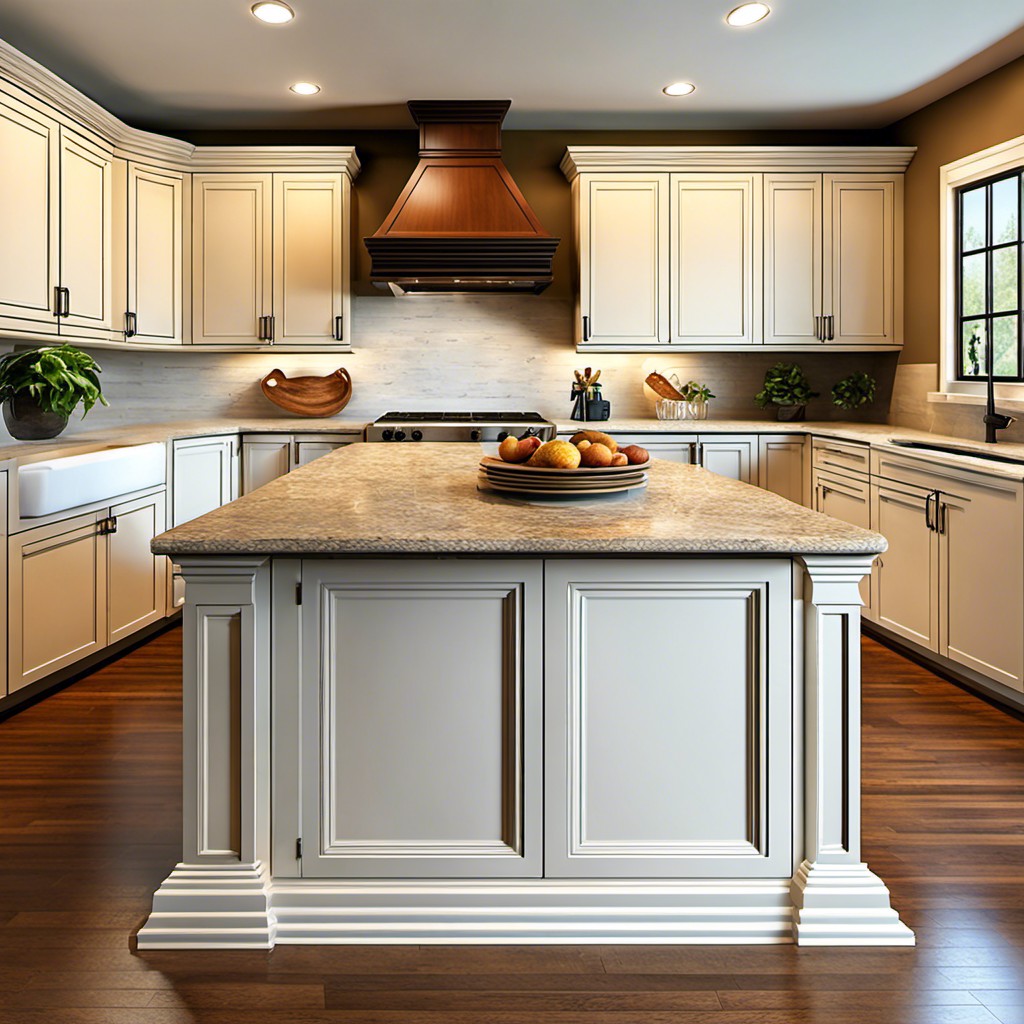
While this design is often associated with older homes, it has stood the test of time for several reasons:
1. Visual Appeal: With exposed pipes that can be finished in a variety of materials, it becomes a unique focal point in the kitchen.
2. Durability: The hardware used to create these vents typically come from strong materials such as bronze or steel, ensuring longevity.
3. Easy Maintenance: Issues with the vent can often be easily diagnosed and fixed due to its open design, saving homeowners on potential future repair bills.
4. Customizable: Homeowners can alter the finish, height, or overall look to match their decor style.
Though it may seem more cumbersome compared to modern designs, the traditional display offers character and functionality that may suit those seeking a blend of classic style and practicality in their kitchen island.
Advanced Ventilation for Island Sinks
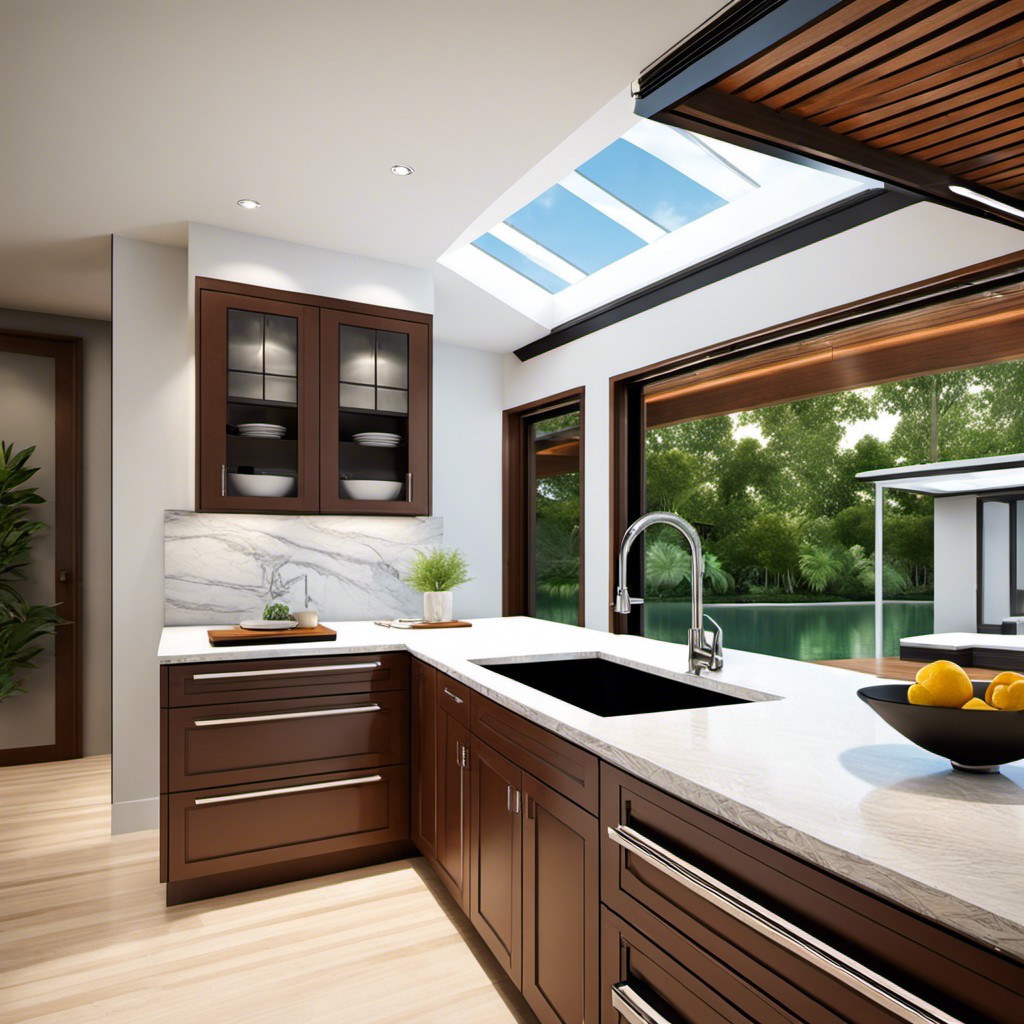
Adopting advanced ventilation in an island sink calls for a loop vent – an effective strategy that helps in maintaining ideal air pressure while flushing out waste and wastewater, preventing sewer gases from entering the kitchen.
1. Air Admittance Valves: These one-way vents permit air to enter when the sinks drain but will prevent sewer gases from leaking out. As a perk, they do not require any connection to the rooftop venting pipe.
2. Loop Configuration: The “loop” in loop vent comes from the unique design where the vent pipe loops upwards before connecting back to the kitchen’s main vent. This configuration assists in equalizing pressure.
3. Material Choice: Choose non-reactive materials like PVC for the loop vent to avoid corrosion and ensure longevity.
4. Professionals Only: Installation should only be handled by experienced professionals to meet local codes and maintain safety standards.
5. Filtration: Some advanced systems may feature filters to further purify the air being vented, providing an extra layer of protection against odor or particles.
Remember, a well-ventilated kitchen is key to maintaining a healthy, comfortable, and odor-free cooking environment.
Outdoor Kitchen Island Vent Loop
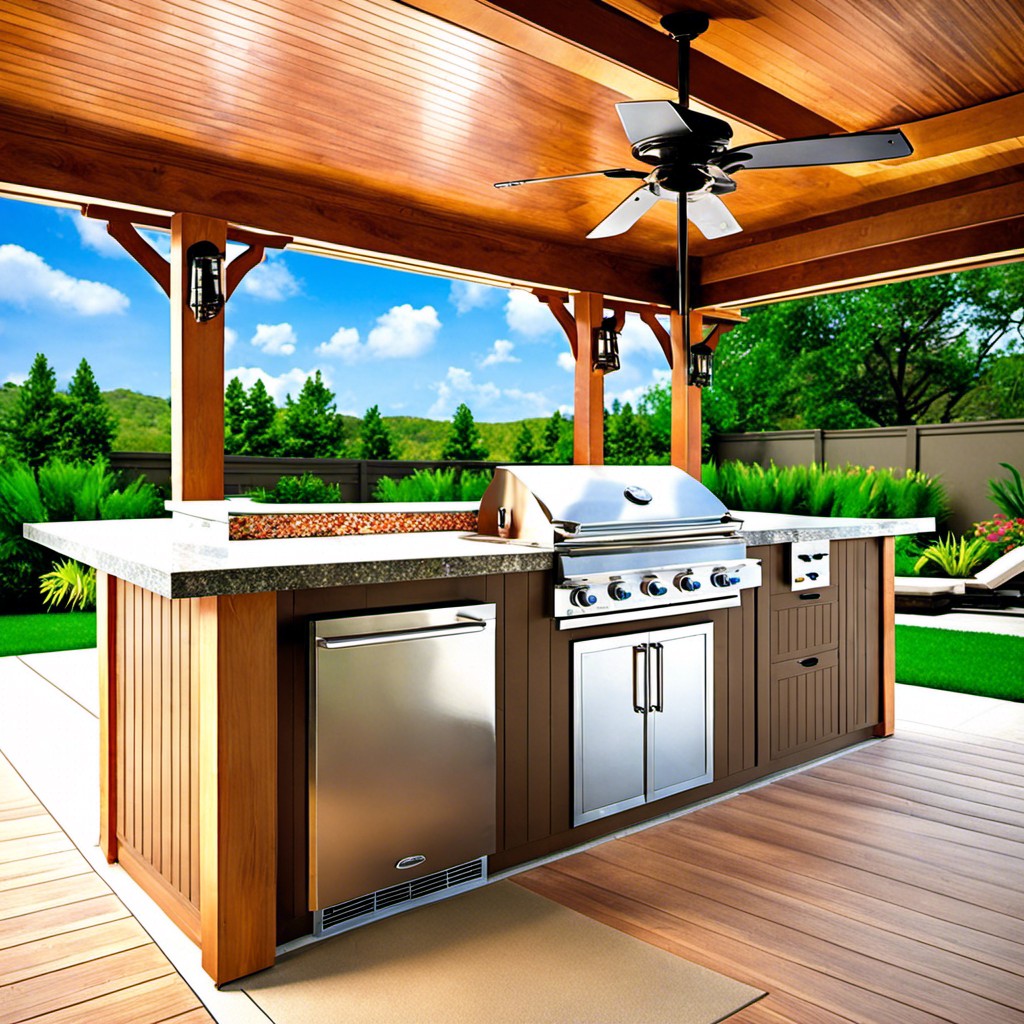
Outdoor cooking presents unique ventilation necessities. The vent loop for an outdoor kitchen island not only keeps the air clean but also protects cooking equipment from weather elements.
1. For a minimalist setup, a stainless steel vent loop is a reliable, rust-resistant option.
2. If your outdoor space features a pool or damp environments, consider a vent loop made with moisture-resistant materials such as PVC.
3. To maintain the fresh, open-air feel of outdoor kitchens, utilize slim, streamlined vent designs. Vents can be seamlessly integrated into the outdoor island structure, whether it’s a pergola or a standalone kitchen unit.
4. Extra features like built-in lighting and pest screening make your vent loop even more functional.
5. In terms of placement, the vent loop should sit height adequately to divert cooking smoke and prevent it from flowing into any nearby dining or lounging areas.
6. Ensure the vent loop is incorporated into the island design width-wise and positioned effectively to maximize airflow and grease extraction.
Remember, an efficient vent loop will create a more enjoyable, smoke-free outdoor cooking experience.
Sleek Modern Loop Vent Design
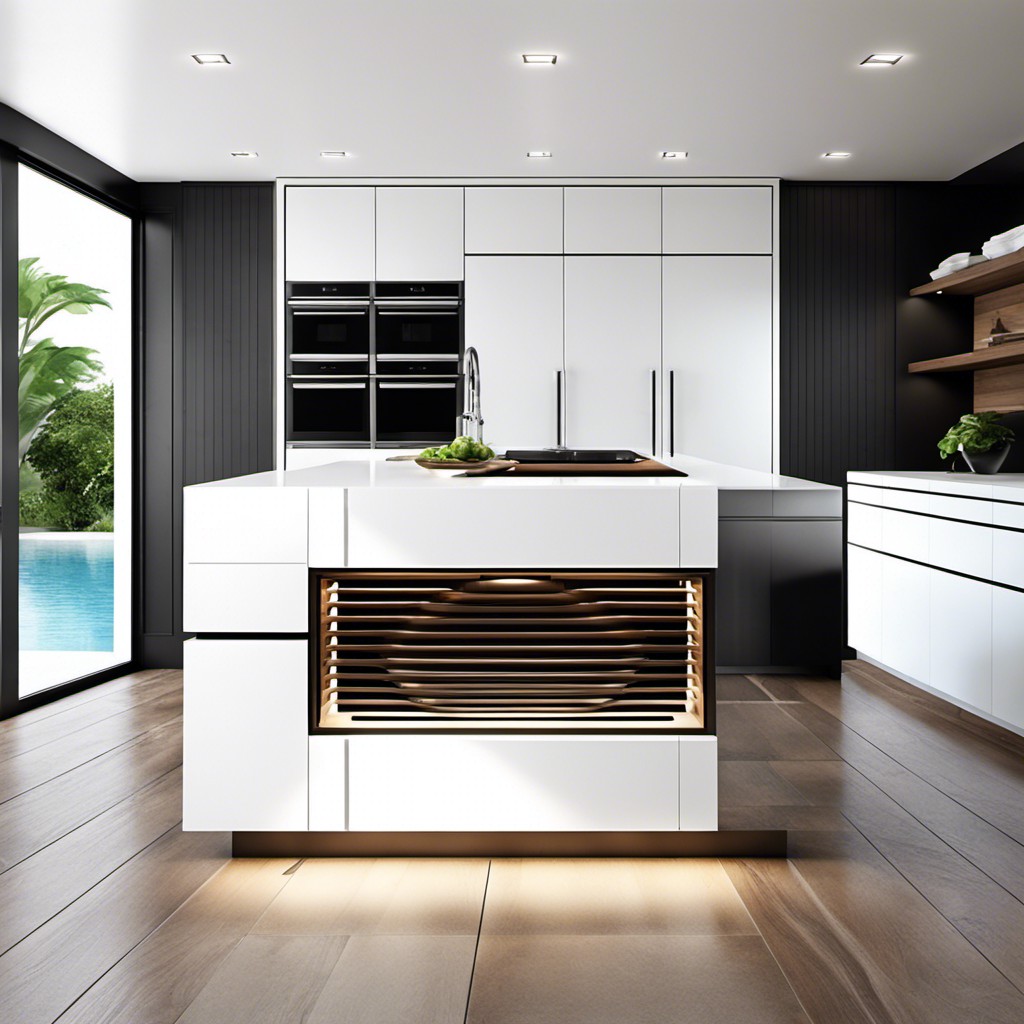
The essence of this design lies in its clean lines, minimalist aesthetic, and high functionality. Integrated seamlessly into your kitchen island, it provides efficient ventilation while maintaining a polished and streamline appearance.
Key elements include:
- Smooth Materials: Typically fashioned from stainless steel or chrome to enhance the sleek look.
- Flush Fitting: Designed to fit flush with the countertop to maintain a cohesive look.
- Discreet Controls: Controls may be touch sensor or discretely positioned to avoid interfering with the minimalist design.
- High Functionality: Despite its streamlined look, the high-powered fan effectively filters and extracts cooking fumes and odors.
- LED Lighting: Modern vent designs often feature understated LED lighting to illuminate the cooking area below.
Remember, even with a modern setup, regular cleaning and maintenance of your vent are vital to ensure optimal performance and longevity.
Copper Island Loop Vent Inspiration
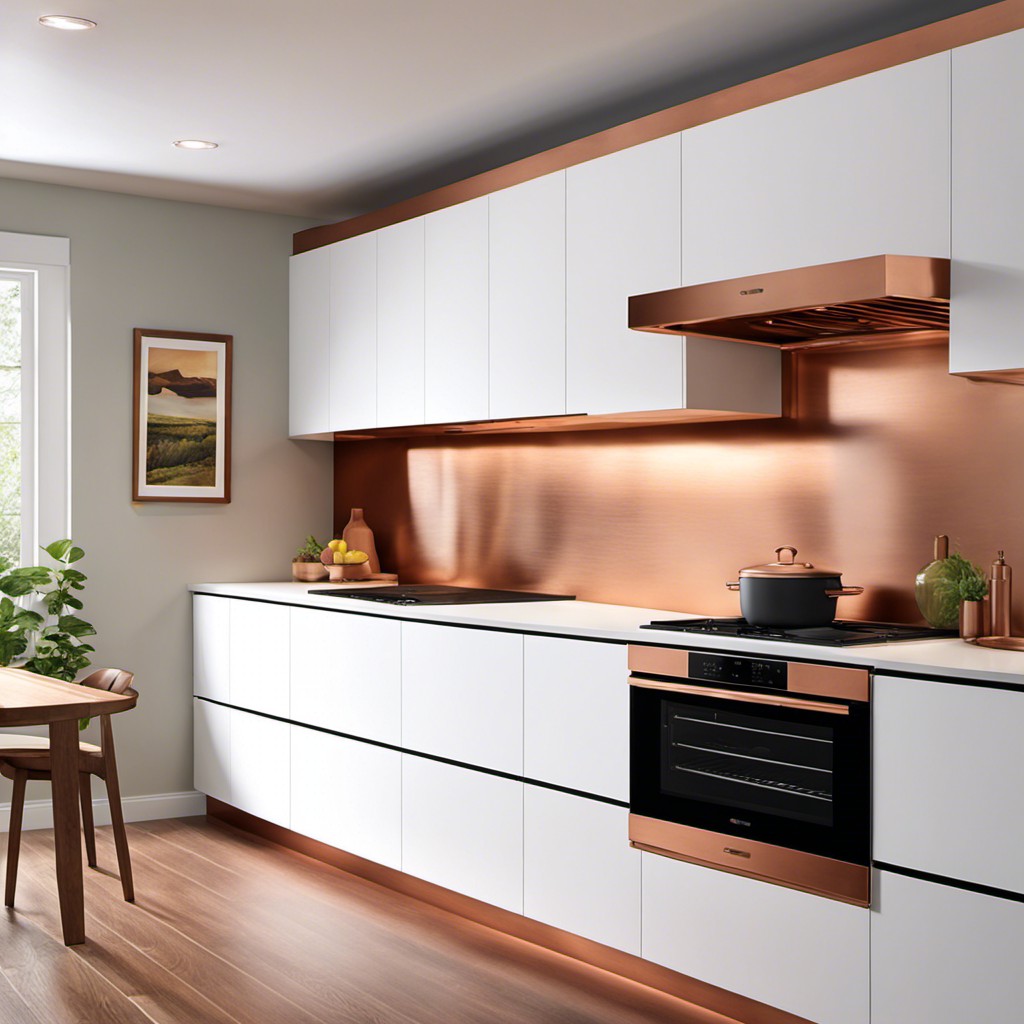
Copper, with its warm color and rustic charm, can serve as a visually appealing addition to your kitchen island loop vent. It offers a classic aesthetic while succeeding in functionality as well.
1. Antibacterial Properties: A natural advantage of copper is its antibacterial properties. This cleanliness aspect makes it ideal for a kitchen environment.
2. Aging Gracefully: Copper develops a lovely patina over time and it adds a vintage appeal to your vent system.
3. Easy Maintenance: Besides looking exquisite, copper requires minimal upkeep, and simple regular cleaning keeps it shining.
4. Versatility: Matching a copper vent with various island finishes is easy due to its flexible nature.
5. Heat Tolerance: Copper can withstand high temperatures, adding to its suitability for vents in a kitchen environment.
Exploring combinations and custom designs with a choice of finish can lead you to fashion a copper vent setup that ultimately stands out as a statement piece within your kitchen island design.
Rustic Island Vent Loop Concept
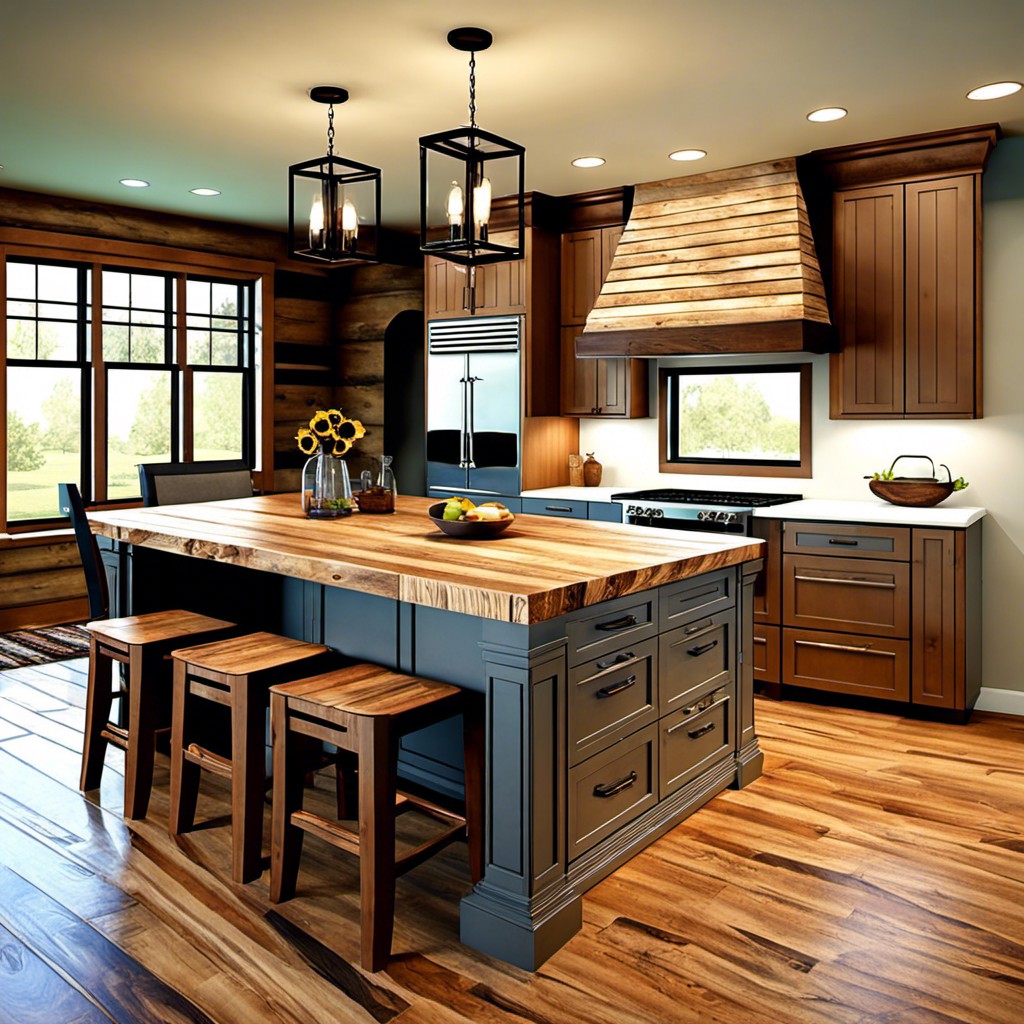
Opting for a rustic aesthetic can lend your kitchen a warm, inviting vibe. A rustic island vent loop concept usually incorporates natural materials and antique finishes. Think grainy wood and oil-rubbed bronze.
Consider these crucial points in achieving this concept:
- Wood Finishes: Using timber with visible knots and grain contributes to the rustic feel. Opt for pine, oak or hickory in medium to dark tones.
- Metal Accents: Copper or bronze fixtures work well, providing a stark contrast against the wooden backdrop.
- Antique or Vintage Hardware: Consider nostalgic details like oil-rubbed handles or weathered brackets.
- Substantial Vent Covers: Rustic design favors functionality rather than concealment, so choose a vent cover or hood with a solid, visible presence.
- Detailed Craftsmanship: Look for vent components with detailed engraving or handmade accents to showcase the charm of traditional craftsmanship.
- Muted, Earthy Tones: For paint and stain, stick to colors found in nature, such as mossy green, deep brown, or muted blue.
Remember, the key to rustic design lies in simplicity and durability. Keep these details in mind to create a pleasant, homespun kitchen air flow solution.
Industrial Style Vent Loop Suggestions
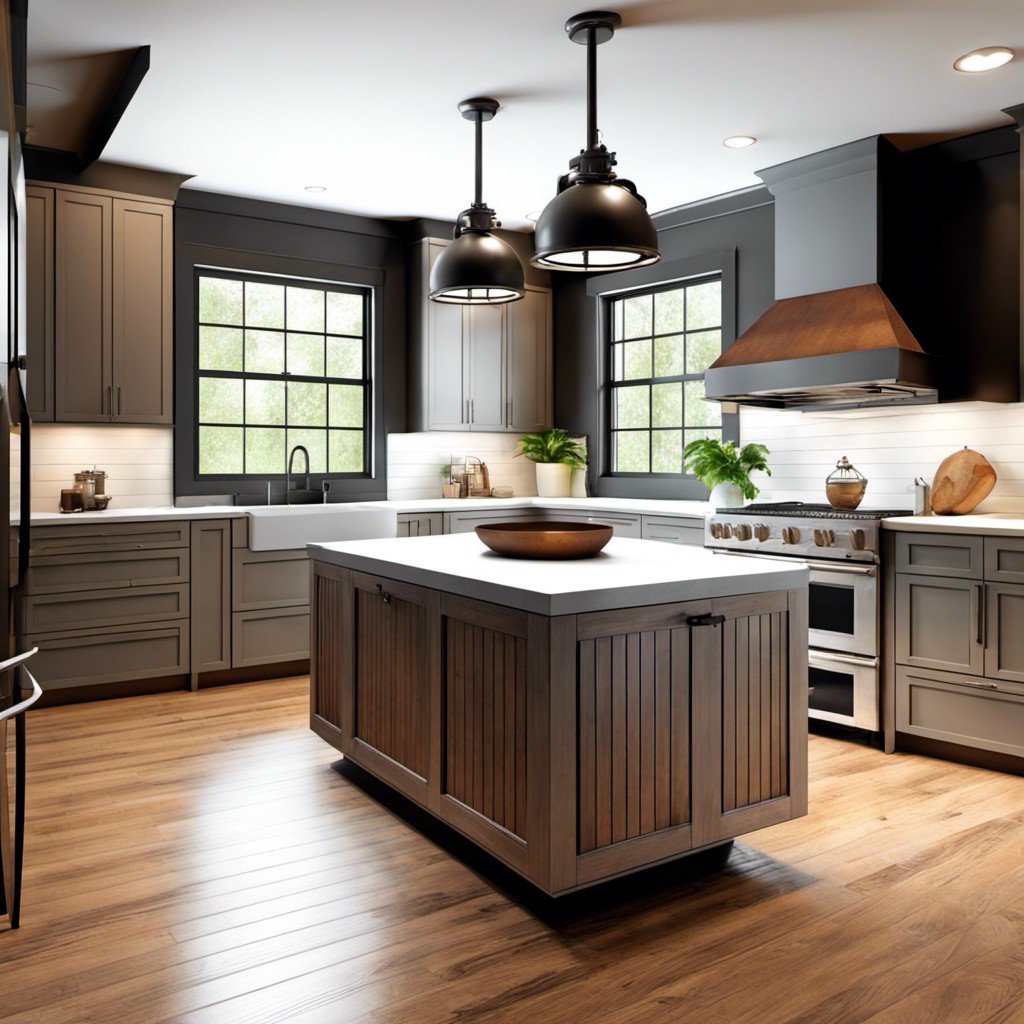
Opting for an industrial touch in your kitchen can blend aesthetics and functionality. Raw materials like exposed steel and weathered wood are prominent features in this style. This can be translated into your loop vent set-up in an innovative way.
1. Metal Pipework: Consider using metallic pipes for the visible parts of your vent loop system. The rustic, unfinished appeal of metals such as copper or brass evokes an industrial vibe.
2. Galvanized Steel Cover: Use this sturdy, vintage-looking material as a cover to hide the vent loop. It not only blends well with industrial aesthetics but also offers protection.
3. Vintage Faucet Handles: Repurpose antique faucet handles to control your vent system. This adds a unique, industrial charm while maintaining functionality.
4. Exposed Vents: Instead of hiding your vent loop, make it an integral part of your kitchen’s design. Painting it matte black or stainless steel grey can create a visual interest.
5. Industrial Light Pendant: Integrate a stylish pendant light with your vent loop. This can serve a dual purpose – illuminating your island and maintaining ventilation.
Remember that industrial style is about celebrating the art of functional design. Each element in the space is not only practical but also contributes to the overall aesthetic story.
Island Loop Vent With Advanced Filtration
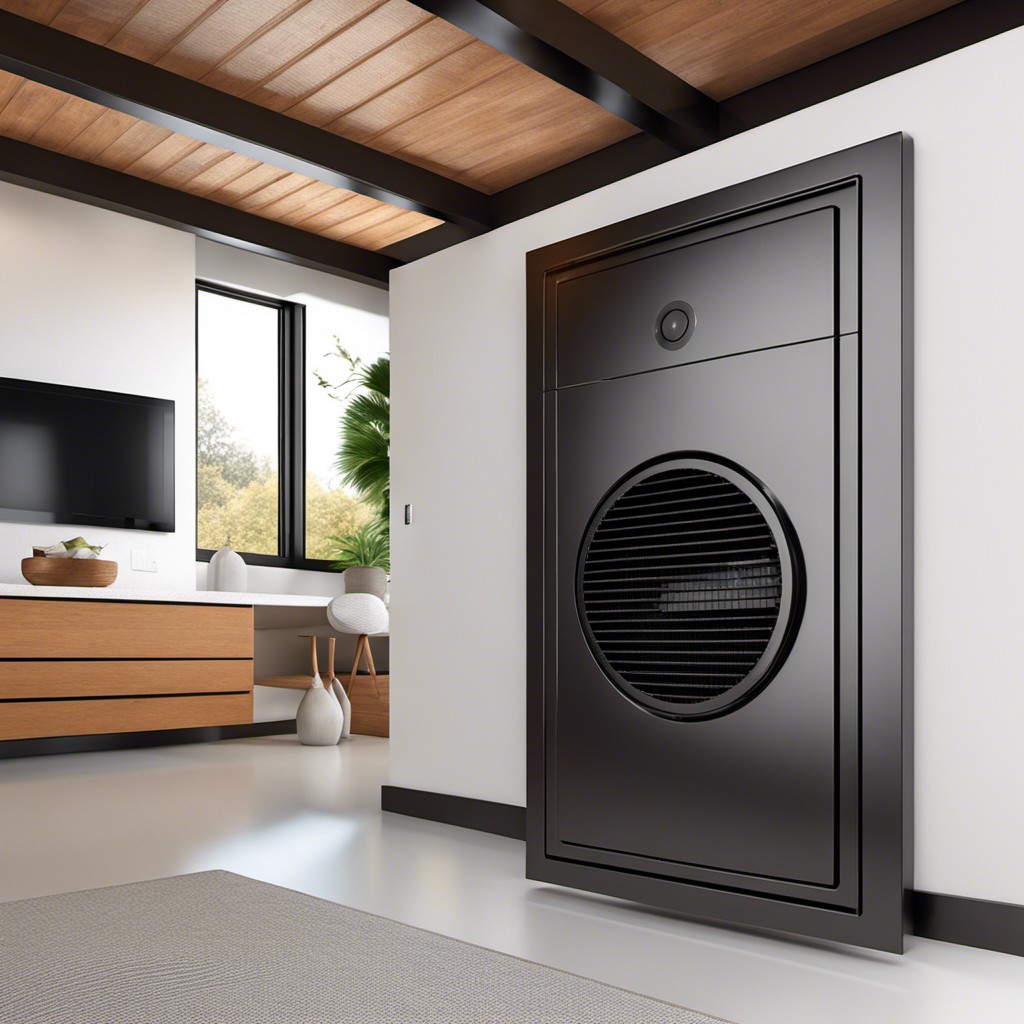
Understanding the functionality behind an advanced filtration system can be essential in this design plan. It says goodbye to lingering odours and improves indoor air quality.
1. High-Grade Filter: The primary focus of advanced filtration systems is to eliminate unpleasant smells from cooking, offering a clean and fresh ambient in your kitchen.
2. Replacement Frequency: For such systems, filter replacement typically occurs semi-annually or annually, depending on usage.
3. Pollution Reduction: Advanced models can help reduce harmful pollutants by trapping airborne grease and reducing smoke emission.
4. Energy Efficiency: Most of these units come with automated features adjusting filtration speed based on kitchen activities, aiding energy conservation.
5. Noise Reduction: Such vent systems operate quietly, assisting in maintaining a peaceful environment within the kitchen.
Once installed, these advanced filtration systems not only elevate the aesthetic appeal but also brings in functionality, making it an ideal inclusion for any modern kitchen island loop vent system.
Ergonomic Island Loop Vent Placement

The ergonomic aspect is essential when deciding on the placement. Carve out an efficient working space by strategically inserting the loop vent in an area that promotes good posture and minimizes physical strain.
Consider the following points:
- 1. Height Proportions: Position the vent at a comfortable height to diminish bending and unnecessary stretching, thus enhancing the overall user experience.
- 2. Workflow Efficiency: Place the vent in a location that doesn’t disrupt the kitchen work triangle – the route from the refrigerator to the sink, and then to the cooking appliances.
- 3. Aesthetic Balance: Align the vent with the design and symmetry of the island, ensuring it complements the overall kitchen layout.
- 4. Maintain Accessibility: Ensure the vent, including its controls and filters, is easily accessible for cleaning and maintenance.
Creative Designs for Camouflaging Island Vents

To distract from the obviousness of a vent, a popular design trick is to integrate it with the countertop material. This creates a seamless look where the vent appears as just another part of the kitchen island. Another common technique is using matching cabinet panels on the vent hood, making it look like an extension of your cabinetry.
Alternatively, consider adopting a retractable vent which remains hidden within the island unless in use. This provides functionality without compromising aesthetics.
Finally, for an iconic designer touch, cleverly using a decorative hood can serve as a focal point in your kitchen design. Ornate iron, brushed brass or even painted wood can give an artistic twist to your practical vent hood.
Remember, function and form should coexist in the kitchen, ensuring both comfort and beauty.
Chefs Edition Island Loop Vent System

The Chefs Edition system understands the importance of a highly efficient, quiet running, and easily cleaned vent for those who are passionate about cooking. It features a simple-yet-robust construction, designed to deal with even the heaviest culinary usage.
1. Superior Exhaust Capacity: Its high-powered fan efficiently whisks away steam, odors, and grease particles, keeping your kitchen air fresh.
2. Quiet Operation: This edition, unlike others, minimizes noise, providing a more serene atmosphere for cooking and socializing.
3. Easy Cleaning: It includes dishwasher-safe filters that can be easily removed, cleaned, and replaced, maintaining a healthy and odors-free environment.
4. Heat Sensor: The system can automatically turn on when it detects high levels of heat, providing extra protection for your kitchen.
5. Adjustable Speeds: It gives you the control to adjust the fan’s speed based on your cooking requirements, ensuring energy efficiency.
6. Professional Design: It follows an industrial-style aesthetic, blending in rightful into professional or home-style kitchens.
These features make this vent system a dream come true for the true kitchen connoisseurs.
Dual Vent Loop System for Large Islands
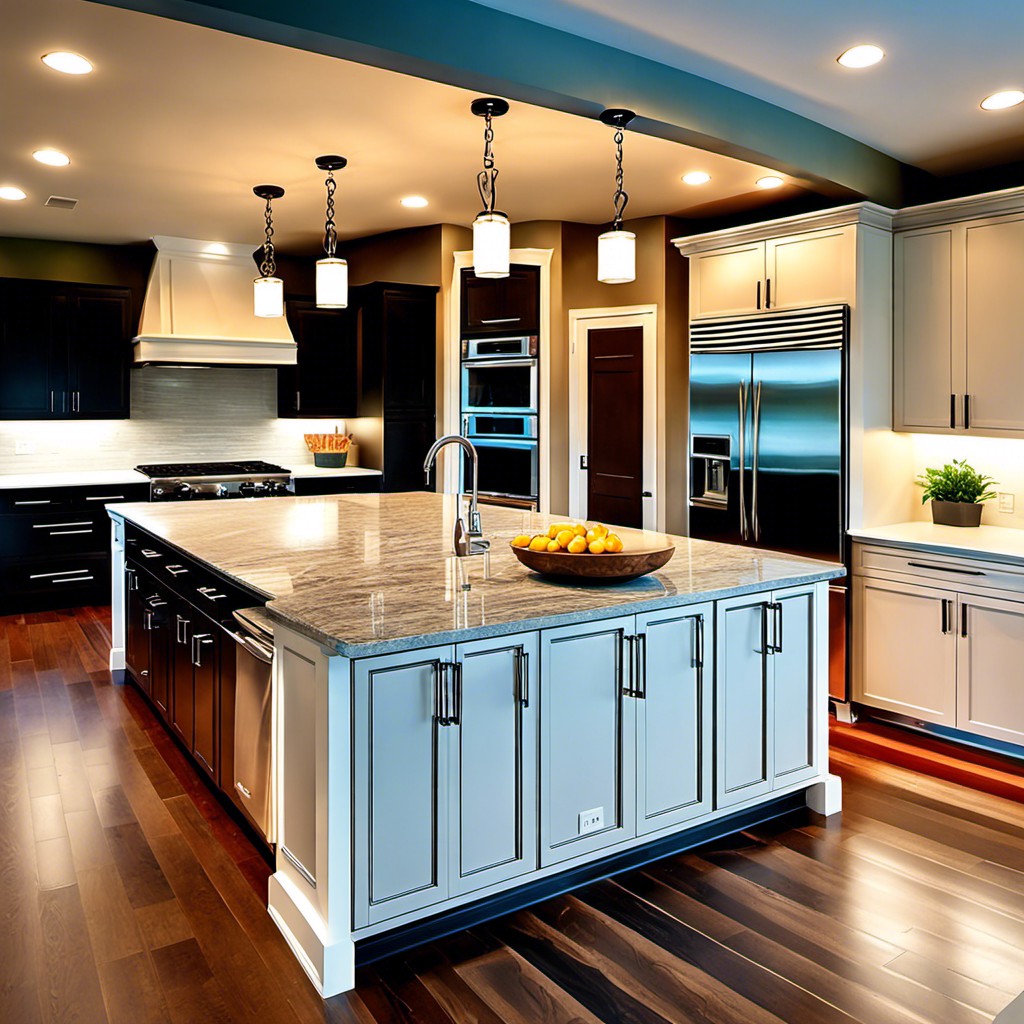
Large kitchen islands often require advanced solutions to guarantee efficient drainage. One option is a dual vent loop system. This system involves two separate vent loops working simultaneously. These loops are arranged strategically on opposite ends of the island to ensure equal distribution of ventilation.
Key points to note about Dual Vent Loop System:
- Improved Efficiency: Two sets of vents mean double the efficiency, ensuring quicker venting and fewer blockages.
- Cost-Saving: Despite needing double the materials, it’s a long-term investment that saves costs on potential drain problems in the future.
- Easy Installation: Integrating into your kitchen island design is easily achievable with a knowledgeable plumber.
- Reduced Odor: More vents translate to faster removal of odorous air, maintaining a fresh atmosphere in your kitchen.
Remember that your island’s size and sink’s location play a key role in determining whether a dual vent loop system is right for you. Consulting with a professional is best.
Vent Loop Island With Smart Technology
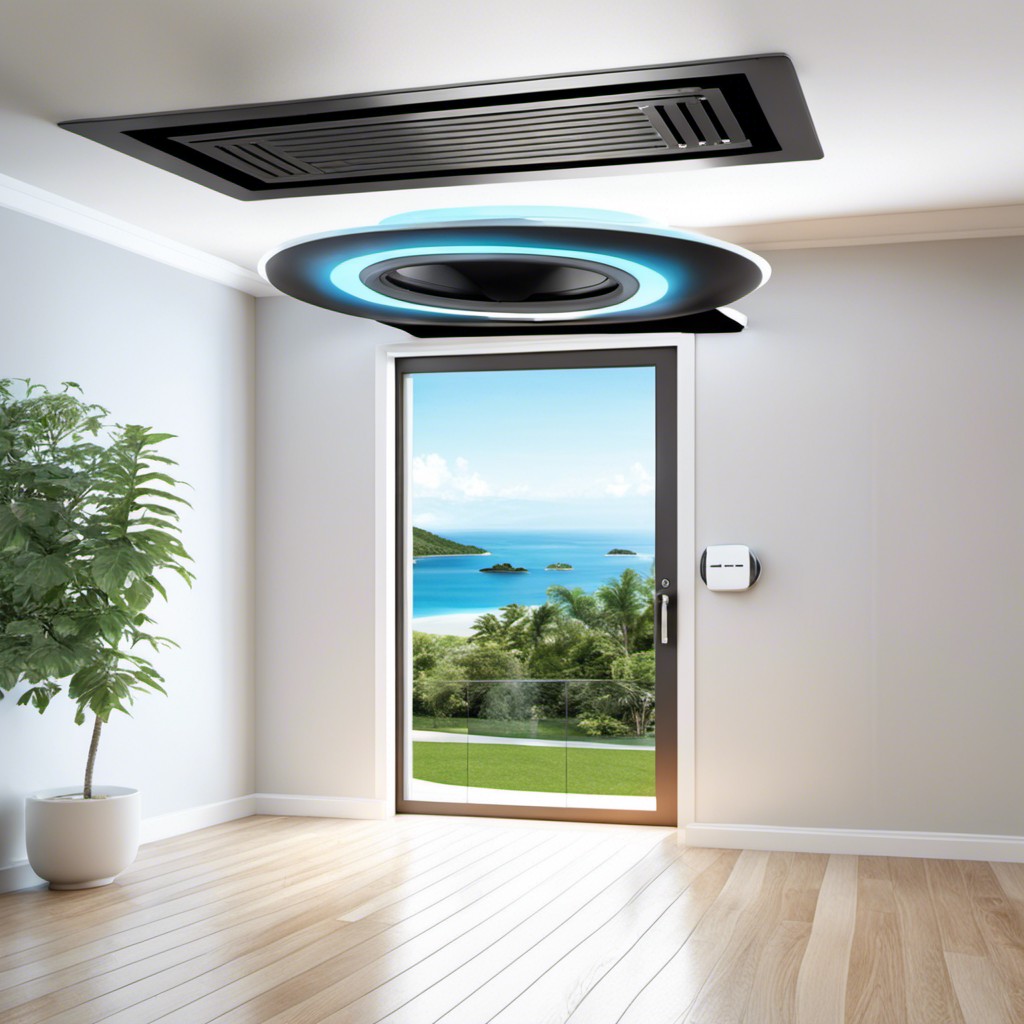
The integration of smart technology has revolutionized the functionality of the vent loops in islands. These advanced systems can be controlled via applications on your smartphone or tablet. Imagine adjusting your kitchen ventilation without having to leave your comfortable couch!
1. Automatic Temperature Sensors: These sensors detect temperature rises and adjust the vent speed accordingly, ensuring adequate ventilation.
2. Smart Timers: You can program your vent to switch on and off at specific times during the day. This feature also helps in energy efficiency.
3. Air Quality Detecting Feature: Some hi-tech vent loops can even monitor the air quality. They adjust their speed when they detect airborne grease or smoke.
4. Remote Control: Why walk over to the vent loop when you can control it remotely? These can adjust speed, direction, and even the light around your kitchen island.
5. Noise Control: Advanced technology has made it possible to have powerful vent loops that work silently. No more kitchen noise disturbances!
It’s all about making your time in the kitchen more enjoyable while maintaining an optimal environment.
Energy Efficient Island Loop Vent Concept
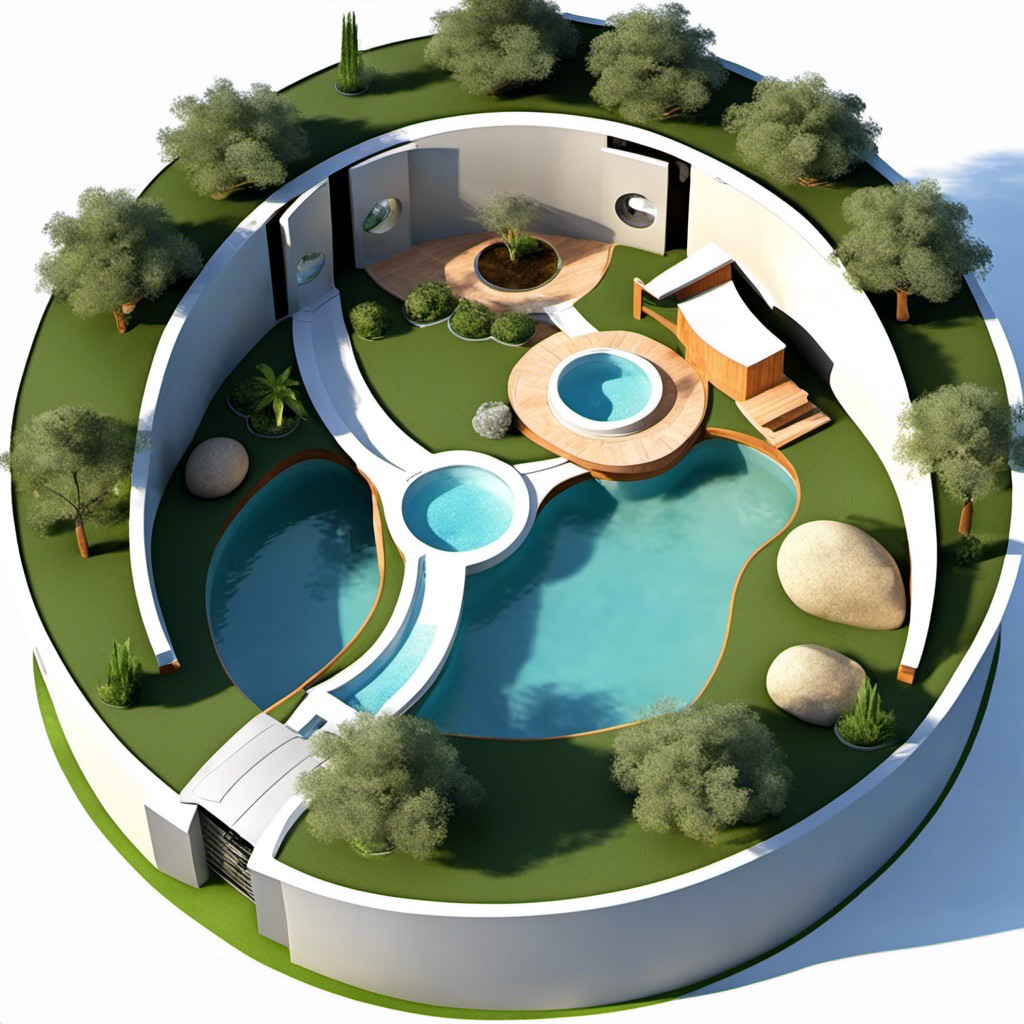
The concept of energy efficiency plays a crucial role in the overall design of island loop vents. These models aim to conserve power while effectively managing waste disposal and air circulation.
1. Use of Advanced Motor Technology: Modern, energy-efficient island vents utilize advanced motors that require less power to operate than traditional ones.
2. Optimal Operation Settings: They often feature adjustable operation settings to ensure that power is used only when necessary, and at the optimal level.
3. Automatic Features: Automatic turn-on/off functionality based on sensors detecting whether cooking activity is happening, further reducing excess power usage.
4. Heat Recovery Systems: Some energy-efficient models implement heat recovery systems. Instead of the heat being wasted, it is repurposed within your home.
Your choice of an energy-efficient island loop vent can significantly cut down your household’s energy consumption, making your home more eco-friendly.
Art Deco Inspired Vent Loop Design
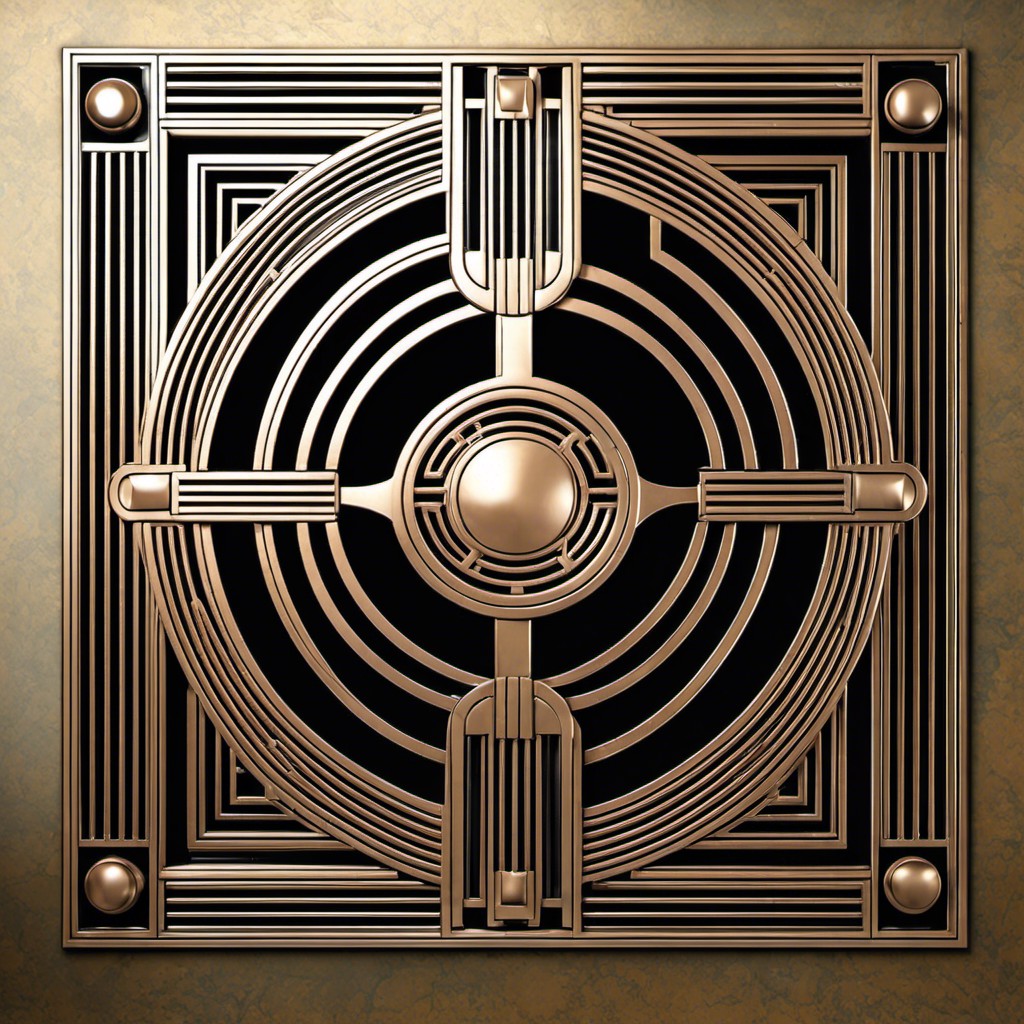
Delving into history, this inspiration hails from the flamboyance of the Roaring 20’s, combining elegance and technology. Features typically include stylized geometric patterns and bold gold or silver accents that exemplify the Art Deco movement.
1. Sophisticated Geometry: Bold angles, sweeping curves, and intricate symmetrical patterns add visual interest.
2. Metallic Accents: Gold, silver, and copper inlays in the vent design help to tie in the classic Art Deco look.
3. Statement Pieces: Art Deco encourages making your island loop vent a central feature rather than hiding it away.
4. Balance: Strive for a harmonious balance between the opulent style and your kitchen’s overall design.
5. Functionality: Art Deco design does not compromise on function. Ensure your vent loop efficiently manages plumbing needs.
Remember, your island loop vent can be a means of expressing your unique design aesthetic while serving a crucial purpose in your kitchen’s plumbing setup.
Retro-Modern Island Vent Loop Idea

Retro-modern design is all about paying homage to the past while embracing the conveniences of the present. When it comes to incorporating this style into your island vent loop, there are several key points to consider:
1. Sleek Lines and Curved Edges: Retro-modern design combines the clean, geometric lines of modernism with the soft, organic curves of mid-century style. A vent loop following this aesthetic could feature a low-profile, rectangular structure for the vent loop with smooth, rounded corners.
2. Duotone Colors: Retro-modern palettes often use contrasting shades – think a vibrant color paired with a monochrome tone. A bold, bright color could be used on the outer shell of your vent loop, complemented by cool silver or iron-black inner elements.
3. Modern Technology: While the design might be vintage-inspired, the functionality should be ultra-modern. Equip your vent loop with a high-performance motor for efficient air circulation, sound-dampening materials to minimize noise, and touch-control settings.
4. Integration: Retro-modern design coordinates nicely with minimalist or industrial-style kitchens. Be sure to integrate your retro-modern vent loop seamlessly with your kitchen island’s design by matching materials and finishes.
5. Iconic Retro-Materials: Look for vent loops with materials that evoke a vintage feel, like chrome or polished aluminum. For a modern twist, consider ones made of stainless steel or brushed brass.
Remember, this design style is meant to look effortless, yet timeless. It’s about balancing old and new for a kitchen island vent loop that’s as efficient as it is stylish.


